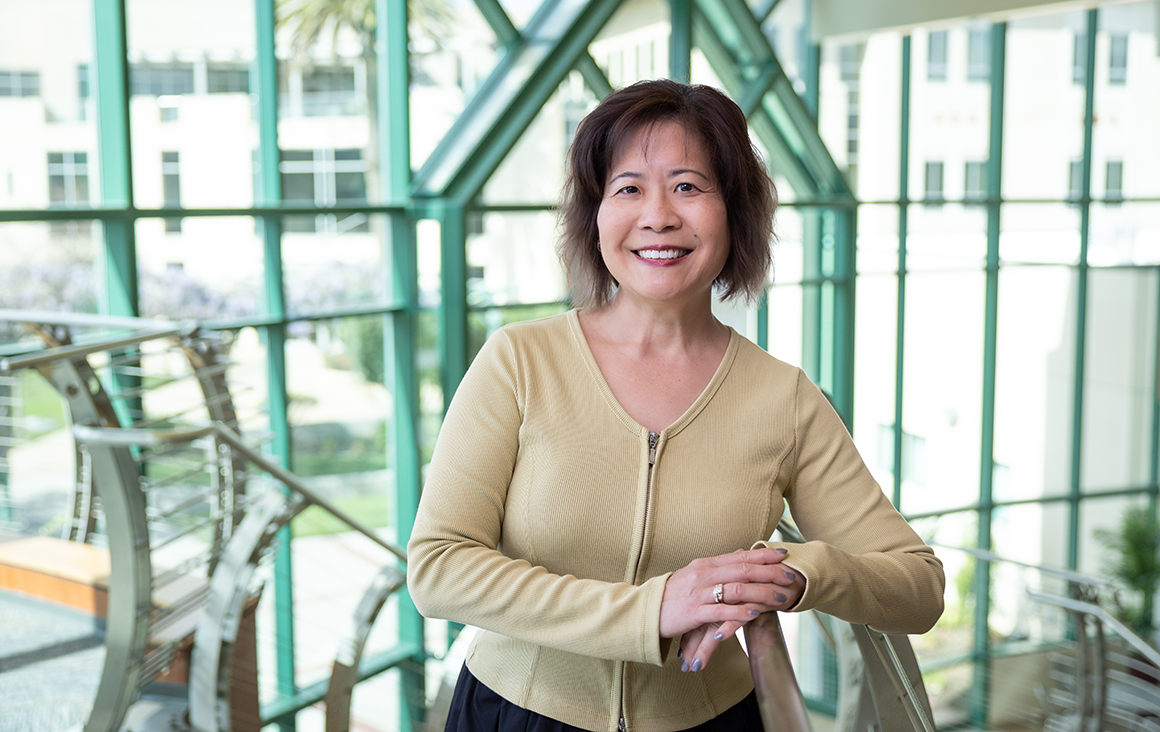Can Feminists Embrace the Virgin Mary?

When Pearl Maria Barros thinks of Mary, the mother of Jesus, she doesn’t think of her as the submissive figure she’s often portrayed. Instead, the assistant professor of Religious Studies thinks of her as a bit of a radical.
For example, when the Angel Gabriel appears to Mary and announces that she has been chosen to bear the Christ, Mary doesn’t immediately agree. Instead, she asks him a question—a radical action, according to Barros.
“Mary,” Barros says, “is this thinking woman who asks questions. That’s an image of Mary we don't get in a typical homily reflecting on the Annunciation.”
For the past eight years, Barros has taught Feminist Theologies at Santa Clara University, a course offered through the departments of religious studies and women’s and gender studies. Combining two of her passions, feminist theories and Catholic theology, Barros and her students re-examine theological texts and figures, like Mary, through a feminist lens.
While joining these two fields might seem surprising on the surface, it’s a natural partnership for Barros. Religion is how people make meaning of their lives, according to Barros, and that includes our ideas of identity and gender. Bringing the two topics together helps students better understand both.
Each quarter, Barros starts the class by asking students to define “feminism,” which can be an important exercise because each student comes to the class with their own definitions and understandings of feminism, some more informed than others.
For instance, it’s common for a student to enter the class thinking feminism implies that women are better or above men or even in conflict with them. This misconception, according to Barros, is informed by everything from pop culture to how news is reported to even sometimes students’ prior education.
Instead, Barros frames feminism through the definition offered by activist Marie Shear: “feminism is the radical notion that women are people.” Though simple, this definition offers a lens to examine women’s experiences in biblical and theological texts and consider what personhood means both in the texts and today.
From there, the class explores intersectional feminist theories and theologies. Students read Sara Ahmed’s Living a Feminist Life as well as Santa Clara Associate Professor Karen Peterson-Iyer’s Reenvisioning Sexual Ethics: A Feminist Christian Account. These works provide context for what feminism can look like and a way for college students to get familiarized with what feminism looks like today.
“It is important to me that the course really emphasizes the plurality of feminisms and highlights works that students can relate to and understand,” says Barros.
When the class starts examining biblical texts, the students aren’t just looking for places where women appear but also where they don’t. For example, are the experiences and voices of women excluded from the Bible and theological texts?
“When students are looking at TikTok or other media I encourage them to exercise a feminist hermeneutic of suspicion. Ask yourself: Where are the women? Which women are portrayed? How are they portrayed? And who is controlling the narrative?”
Feminist theologians like Mary Daly delved deeply into this discussion of women’s representation in the Church during the 1960s. Her famous insight, “if God is male, then the male is God” inspired future generations of Christian feminists to challenge theological frameworks that position women as opposite the divine and as second-class or lesser than men.
In particular, Daly challenged the Catholic Church by saying that the sexism that oppresses women is not just wrong, but a sin. She was one of the first theologians to critique gender inequalities within the Church. She is also a problematic figure. “Daly was not intersectional in her understanding of feminism,” Barros notes, “and some scholars have also argued that she was anti-trans. In class, we discuss these issues and how later feminist theologians respond to them.”
Though much of the course material is decades or even centuries old, students find connections to their current lives throughout, especially when it comes to the idea of representation and featured voices in the media they encounter every day.
Barros encourages her class to apply a feminist “hermeneutic of suspicion” when they consider representation in the media they encounter online and in entertainment. This lens of analysis looks at how women (or any marginalized group) are—or aren’t—represented in different works and media. Whether analyzing a biblical or theological text or Arianna Grande’s “God is a Woman” music video, students come to more deeply understand how representation informs our perceptions of women.
“When students are looking at TikTok or other media I encourage them to exercise a feminist hermeneutic of suspicion,” Barros says. “Ask yourself: Where are the women? Which women are portrayed? How are they portrayed? And who is controlling the narrative? If you begin to ask yourself those four questions, it can mark the beginning of coming into a feminist consciousness.”
Religion involves the human search for ultimate meaning. Not only a matter of belief, religion is a primary mode for creating a sense of belonging and influences the entire scope of human societies, including ethical and political systems. Religious Studies engages the stuff of life and culture: faith and history, theology and ethics, texts and ritual, science and technology, art and literature.


